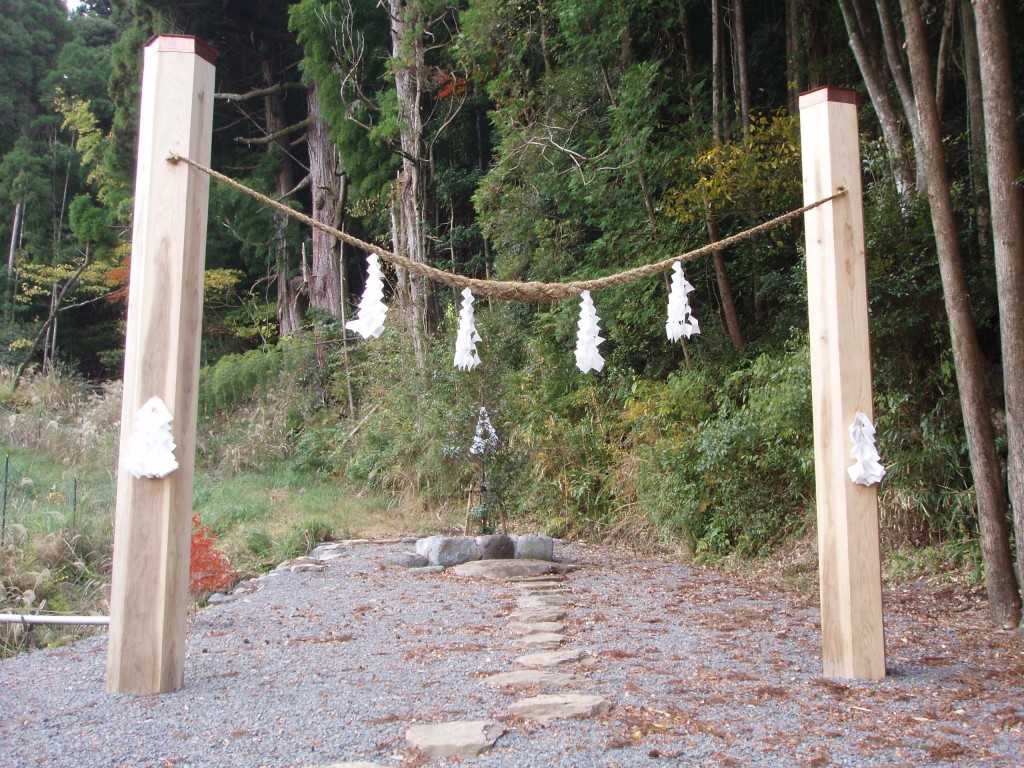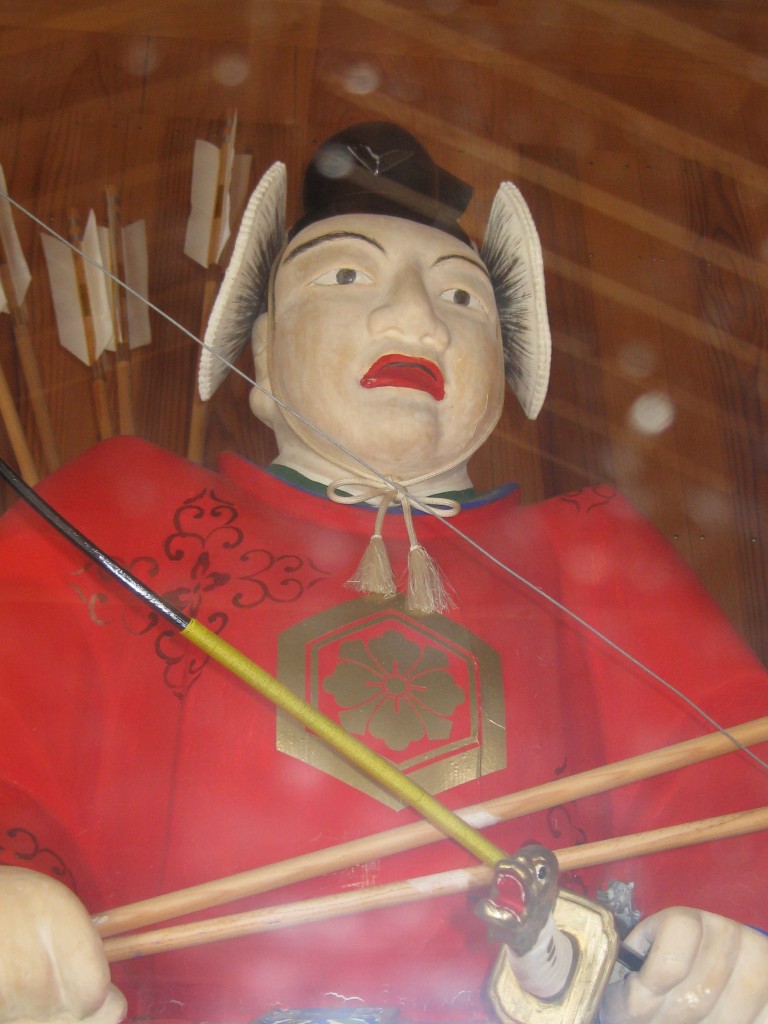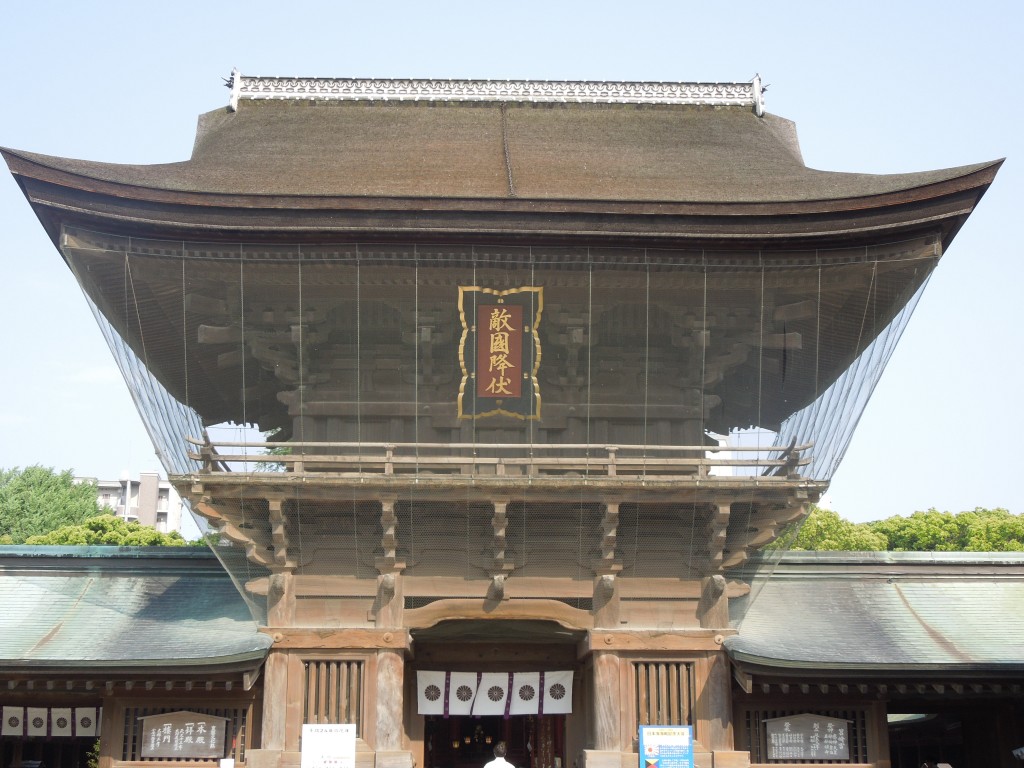This is part of an ongoing series about shrine structures and their history, extracted and abridged from Shinto Shrines by Joseph Cali and John Dougill, published by the University of Hawaii Press.
**********************************************************

Early shrines had no fixed structures but worshipped nature directly
It is impossible to say with certainty when buildings began to act as the home of the kami, but it is believed that the construction of Buddhist temples from around the sixth century ended the practice of building kofun and spurred the building of shrines as well. (Kofun were mounded graves, some quite large and surrounded by a moat, with an underground chamber where the body was laid to rest surrounded by tribute. They were erected for clan leaders or other important people but came to be replaced by clan temples.)

The zuijin guardian figure at Yaegaki Jinja in Izumo
Temple-building methods influenced the style of shrine construction, though shrines are generally built on a smaller and more modest scale. A typical temple contains a main hall where prayers are conducted and offerings made in front of an image of the principal Buddha. There are one or two pagodas where relics of the Buddha, valuable scrolls, and other objects are kept; these are from two to five stories tall. The pagoda contains a mammoth “heart pillar” under which the relics are buried.
By contrast, early shrines probably contained only a honden where the kami was enshrined. Prayers and offerings were made from the outside. Gradually, larger shrines built heiden in which to conduct prayers and offerings, stages for music and dance, and a haiden for worshippers. The two-story gates at some shrines are called romon.
Generally, shrines do not contain images of the deities. The only sculpture may be the zuijin guardian figures in the romon). There is some history of Shinto sculpture (shinzo) found primarily at Hachiman shrines. However, sculpted surfaces on buildings featuring flowers, animals, mythical creatures and allegorical scenes are often found, as are paintings on interior sliding panels and walls.
Common to every building type is wooden construction. Historically there are no temples or shrines of any note made of stone (though during the Edo period, the large number of fires in the sprawling cities encouraged the building of kura-style honden, with thick mud-walls, surfaced in plaster, and resembling fireproof warehouses called kura).

The two-storey 'romon' gate of Hakozaki Shrine in Hakata

Leave a Reply